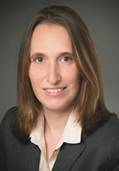Reaseach Group Dr. Christina Schüler
Dr. Christina Schüler
 |
Curriculum Vitae
Since 2016 Junior Group Leader; Goethe University Frankfurt, Buchmann Institute for Molecular Life Sciences
2011-2016 Postdoctoral fellow in the lab of Prof. Dr. Alexander Gottschalk; Goethe University Frankfurt, Buchmann Institute for Molecular Life Sciences
2010-2011 Postdoctoral fellow in the lab of Joachim W. Deitmer; University of Kaiserslautern, Department of Biology, General Zoology and Cellular Neurobiology
2006-2010 PhD thesis: „Funktionelle Interaktion zwischen Carboanhydrasen und dem elektrogenen Natriumbikarbonat-Kotransporter NBCe1 - Untersuchungen im Xenopus-Oozyten-Expressionssystem“ in the lab of Joachim W. Deitmer; University of Kaiserslautern, Department of Biology, General Zoology and Cellular Neurobiology
2002-2006 Studies in Biology; University of Kaiserslautern
2001-2002 Technical Assistant; Boehringer Ingelheim Pharma KG
1998-2001 Vocational Training; Boehringer Ingelheim Pharma KG
Extracurricular Experience & Awards
2007-2010 Associated member of the Research Training Group GRK 845 ”Molecular, physiological and pharmacological analysis of cellular membrane transport“
2007 Award of the ”Freundeskreis der Universität Kaiserslautern e.V.“ for the diploma thesis
Projects:
Characterization of catecholaminergic polymorphic ventricular tachycardia (CPVT) mutations and specific drug screen in the pharynx of C. elegans as an optogenetic arrhythmia model
CPVT is an inherited disturbance of the heart rhythm (arrhythmia) that is induced by stress, or that occurs during exercise. If untreated, CPVT is highly lethal. It often remains unnoticed, due to normal baseline electrocardiograms. Most mutations that have been linked to CPVT are found in two genes, i.e. ryanodine receptor 2 (RyR2) and calsequestrin 2 (CASQ2), two proteins fundamentally involved in the regulation of intracellular Ca2+ in cardiac myocytes. Many different (>170) CPVT mutations and polymorphisms are known. We inserted several CPVT mutations into C. elegans genes unc-68 (RyR) and csq-1 (CASQ) and crossed them with our strain expressing ChR2 in pharyngeal muscle cells to allow an optogenetic stimulation. We characterize those CPVT mutations by electrophysiology and calcium imaging, and perform drug tests with a screening platform to identify candidates for a patient-specific treatment.
Employees:
Marcial Engel – PhD student
Yves Wörmann – student worker
Hanna Kaestner – student worker
Alumnis:
Paula Dyck
Bojana Languille
Caroline Kollmannsperger
Dana Maureen Hebchen
Franziska Hannig




